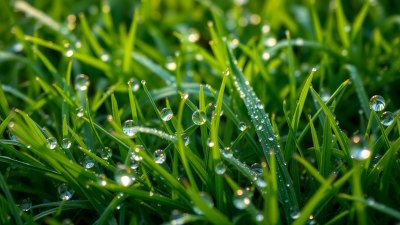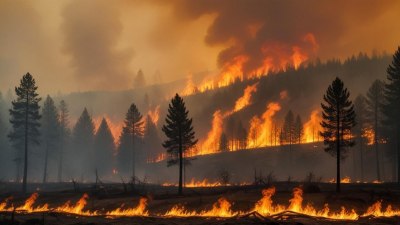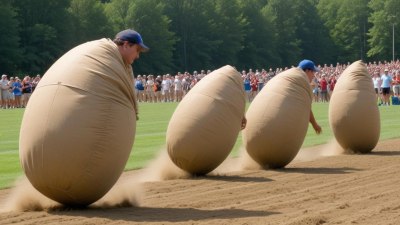The Science Behind Dew on Grass Every Morning
Explore the scientific causes and processes behind the formation of dew on grass each morning, revealing nature's delicate moisture cycle.

Image created with Flux Schnell
Dew forms on grass every morning, presenting a beautiful, sparkling sight that often goes unnoticed despite being a common natural phenomenon. This article delves into the scientific principles behind dew formation, explaining how and why this occurrence happens and its importance in the ecosystem. Understanding dew requires grasping concepts of temperature, humidity, condensation, and surface properties.
What Is Dew?
Dew is the tiny droplets of water that appear on surfaces such as grass, leaves, and cars during the early morning hours. These droplets form as a result of atmospheric moisture condensing onto cooler surfaces. Unlike rain, which involves water droplets falling from clouds, dew deposits directly from the air to the ground or objects through a process called condensation.
The Role of Temperature and Humidity
Dew formation is closely linked to the temperature of surfaces and relative humidity in the air. During the day, surfaces absorb heat from sunlight and often become warmer than the surrounding air. Once the sun sets and night falls, these surfaces begin to lose heat through a process called radiative cooling, dropping in temperature.
When the surface temperature falls to the dew point—the temperature at which air becomes saturated with water vapor—water vapor in the air condenses into liquid droplets. The dew point varies depending on the amount of moisture present in the atmosphere, denoted by relative humidity. Higher humidity means the dew point is closer to the actual air temperature, increasing the chances of dew.
Radiative Cooling: Nature’s Air Conditioner
One of the key mechanisms behind dew formation is radiative cooling. At night, the earth's surface emits infrared radiation into the atmosphere, losing heat energy and cooling down. This cooling effect is intensified under clear skies and calm winds, which prevent heat from being replenished by warmer air or clouds that act as thermal blankets.
Grass blades, being thin and exposed to the open sky, cool down rapidly as they radiate heat away. Once their temperature dips below the dew point, water vapor condenses directly onto these surfaces, forming dew droplets.
The Science of Condensation
Condensation is the physical process in which water vapor changes from a gaseous to a liquid state when cooled to its dew point. In the morning, the temperature of grass and other surfaces can closely approach this critical temperature due to overnight cooling. Water molecules in the air lose kinetic energy and cluster together, forming tiny droplets.
The surfaces of grass blades have fine structures and slight roughness which provide nucleation sites—microscopic areas where water vapor can condense more easily. These sites facilitate the initial formation of droplets, which then grow as more vapor condenses.
Why Grass Is an Ideal Surface for Dew
Grass is particularly prone to dew formation because of its ability to radiate heat effectively and its thin structure. Unlike heavy or insulated surfaces, grass blades cool quickly and have extensive surface area relative to their volume, allowing for efficient heat loss.
Moreover, the orientation and spacing of grass blades increase exposure to the sky, encouraging radiative cooling. The blade surface tension also helps hold the tiny water droplets in place, making dew clearly visible in the early morning light.
Environmental Factors Affecting Dew Formation
Several environmental variables influence the quantity and timing of dew on grass:
- Cloud Cover: Overcast nights reduce radiative cooling, resulting in less dew.
- Wind: Strong winds mix the air near the ground, maintaining warmer temperatures and reducing dew formation.
- Humidity: Higher atmospheric moisture increases the likelihood and volume of dew.
- Surface Characteristics: Different soil and plant types affect how quickly surfaces cool and how easily moisture condenses.
- Seasonal Variations: Dew is more common in spring and fall when humidity is higher and temperature fluctuations are more pronounced.
The Ecological Importance of Dew
Dew plays a crucial role in many ecosystems by providing moisture in arid or semi-arid environments where rainfall is infrequent. Plants can absorb dew directly through leaf surfaces, aiding their hydration and survival during dry periods.
This overnight moisture also supports micro-organisms on plant surfaces, helping maintain biological activity and nutrient cycling. Additionally, dew can contribute to soil moisture through drip and subsequent infiltration.
Dew Versus Frost: The Cold Difference
When temperatures drop below freezing, dew formation transitions to frost formation. Frost occurs when water vapor deposits as ice crystals instead of liquid droplets. The underlying physical processes are related but distinct, involving deposition rather than condensation, and require colder temperatures.
Understanding the difference helps gardeners and farmers avoid damage to sensitive plants during cold nights.
How Humans Utilize Dew
Throughout history, humans have observed and utilized dew for water collection in arid climates. Traditional methods include placing cloths or plastic sheets over plants or soil overnight to capture dew, which is then collected for irrigation or drinking.
Modern innovations inspired by dew formation mechanics include dew-collecting technologies that can supplement freshwater resources. These devices mimic natural surfaces and promote condensation for water harvesting.
Dew and Meteorology
Meteorologists use dew point measurements as an important indicator of moisture content in the atmosphere. Dew point data helps forecast weather conditions such as fog, precipitation likelihood, and heat indices. It also influences predictions on insect and plant behavior.
Monitoring dew formation patterns provides useful information about local microclimate conditions and environmental changes over time.
Dew as a Window Into Nature’s Moisture Cycle
Dew on grass each morning results from a complex interplay of atmospheric physics and environmental conditions. It is an elegant example of how subtle temperature changes and moisture dynamics manifest visibly in nature. Appreciating dew enhances our understanding of water’s movement through the environment and the delicate balance sustaining plant life.
Next time you notice shimmering droplets on a blade of grass, remember the intricate scientific processes that brought them into existence overnight, connecting the earth, air, and water in a beautiful natural cycle.











